
What is curing salt?
Curing salt is an additive used in the production of cured foods. Its main function is preservation by inhibiting contamination by bacteria and fungi. One of the main reasons for its use is to suppress the proliferation of the bacteria clostridium botulinum, which contaminates food with botulinum toxin. In addition to preservation, curing salt also acts as an antioxidant and adds specific flavor and color to foods that use this additive. It is generally used in sausages, sausages or cured meats (smoked and/or dried). Curing salt is made up of a mixture of table salt, sodium nitrite and/or sodium nitrate. The curing salt acts on the meat, giving it the reddish color typical of cured products, such as salami, mortadella, sausages and sausages.
The characteristic red color of cooked cured meat products (that is, those containing nitrite or nitrate) is due to the pigment nitrosylhemochrome, which is the heat-denatured form of nitrosomyoglobin, which, in turn, is formed through reaction between nitric oxide (NO) from nitrite (NO2) and natural myoglobin from meat. During cooking, the myoglobin (globin) protein chain denatures and separates from the heme group, thus producing the aforementioned nitrosylhemochrome, responsible for the characteristic red color of cured and cooked meat products.
The intensity of these reactions depends on some conditions, such as the presence and action of certain microorganisms, natural reducing agents in the meat (natural antioxidants/vitamins), mitochondrial enzymes, added antioxidants, pH of the medium, redox potential, type and form of packaging, oxygen pressure and conservation/storage time and temperature. There are many technical details, but in general there is a rule and proportion that can be used safely. It is not necessary to understand all the details, just the basics that we detail below.
The curing salts that follow the North American standard (instacure#1 and instacure#2) are composed of 93.75% of table salt (sodium chloride) and 6.25% of sodium nitrite (NaNO²). Some contain 4% sodium nitrate. Sodium nitrate (NaNO³) gradually loses an oxygen molecule during the curing process and starts to have the same composition as sodium nitrite, which is why it is used in longer curing processes, having a slower and more prolonged action.
To learn more about sodium nitrite and sodium nitrate, read Sodium nitrite and nitrate.
How much curing salt to use?
Each recipe usually calls for a different amount and this tends to create confusion when deciding how much curing salt to use. For this reason, the ideal is to standardize according to the limitations established by the competent bodies.
The calculations presented below were made based on the curing salt that follows the North American standard for the designation of Curing salt 1 or, as it is also known, Instacure#1, which contains 6.25% of sodium nitrite and 93.75% of common salt (Sodium Chloride). In Brazil there is no standardization, so it is important to check the quantity in the product purchased.
The Collegiate Board of the National Health Surveillance Agency, through RDC nº 272, of March 14, 2019, provides for food additives authorized for use in meat and meat products, determining that the level of residual nitrite and nitrate in the final product cannot exceed 0.015g per 100g of product, or 150ppm. Therefore, the added nitrite must be reduced during the curing process, ensuring that this limit is not reached in the ready-to-consume product. Following legislation, a maximum of 0.015g of residual sodium nitrite is limited for every 100g or ml of product (meat) or solution (brine). check out here the official table of additives and reference quantities.
The curing salt that follows the North American instacure#1 standard contains 6.25% of sodium nitrite, that is, 1g of curing salt contains 0.0625g of sodium nitrite. According to our calculations, the established residual limit is 2.4g of curing salt for every 1kg of meat\brine. In other words, this is the minimum to be added, because using this measure the final product will never have more than the maximum residual established as it is already at the limit and there is still a strong reduction during the curing process. Read the post Nitrite conversion time in cured meats where studies are presented on the reduction/conversion of nitrite in products.
The European Union limits it, as in Brazil, to a maximum of 150ppm, but there are exceptions such as Denmark, which limits it to 60ppm.
The North American FSIS (Food Safety and Inspection Service) differentiates between the types of nitrite insertion processes, such as injection, massaging and immersion. In the immersion and massage technique, a limit of 200ppm of sodium nitrite is established for the raw meat of the product to be cured. It is the equivalent of 0.02% of sodium nitrite. Converting we arrive at 0.2g of sodium nitrite for each kilo of meat. Calculating we arrive at 3.2g of curing salt for each kg of meat. Limit slightly higher than that established in Brazil. North American legislation still provides for a minimum to be added, which is 120ppm. In other words, as a safety measure, no cured meat product has additions below this limit.
It is well-founded scientifically that at least 50-75 ppm of nitrite are needed to maintain an adequate curing color in meat and to be able to inhibit lipid oxidation, as well as 75 to 100 ppm of nitrite are needed to contribute to the control of micro -pathogens and decomposition organisms.
We reiterate that the calculated values refer to the curing salt that follows the North American standard, called instacure#1, or, as it is commonly called in Brazil, curing salt 1.
Does your curing salt contain different amounts of Sodium Nitrite than what was used in the calculation? Use our Food Additive Calculator
If you want to check and do your analysis and calculations (recommended), see the FSIS document
What is the difference between Curing Salt 1 and Curing Salt 2?
To understand the difference between these types of curing salt, read the post Curing salt 1 and Curing salt 2.
Is the use of curing salt mandatory?
The majority of processed meat products, such as salami, sausages, bratwurst, bacon, ham and mortadella intended for sale must contain sodium nitrite, which is generally added in the form of curing salt. States and municipalities, through specific secretariats, follow national guidelines and certify establishments and products for sale within their territorial limits.
For home production intended for personal consumption, use is optional. Each person must evaluate the risks and benefits and decide whether or not to use curing salt.
Botulism
This is one of the biggest dilemmas when we think about not using curing salt. There is some controversy about the health harm caused by excessive consumption of sodium nitrite, but botulinum toxin is real and dangerous. Coming from “botulus”, sausage in Latin, botulism is not caused by the bacteria clostridium botulinum itself, but by the toxin generated by the bacteria, therefore there is no point in eliminating the bacteria, it is necessary to ensure that there has been no contamination. This bacteria does not develop at pH < 4.5 (acidic), that is, an important factor is to ensure acidity in the products. When preparing cured meat, such as salami, for example, it is recommended to monitor the acidity of the product throughout the process to ensure it has the correct pH. A combination of factors (protection barriers) is ideal to guarantee the safety of a product. See the main protection barriers in the table below.
Although it is possible to prevent botulism without the action of curing salt, nitrite is still used due to a combination of factors and mainly due to the other benefits obtained, such as color and flavor.
Doubts? Leave a question in the comments!
-
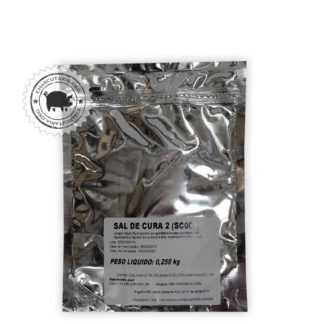 Curing salt 2R$ 8,00
Curing salt 2R$ 8,00 -
 Curing salt 1R$ 8,00
Curing salt 1R$ 8,00 -
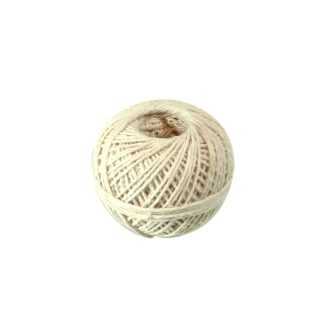 Culinary twineR$ 7,90
Culinary twineR$ 7,90 -
 Natural pork casing for sausageR$ 52,00
Natural pork casing for sausageR$ 52,00 -
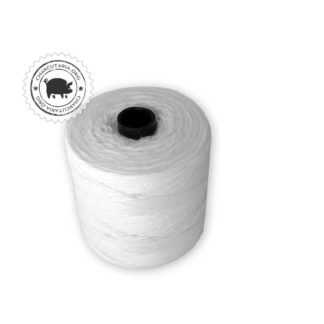 Polyester culinary twineR$ 16,00
Polyester culinary twineR$ 16,00 -
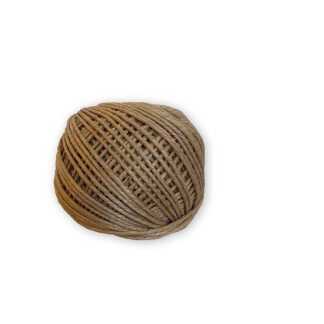 Waxed ramie twineR$ 14,00
Waxed ramie twineR$ 14,00 -
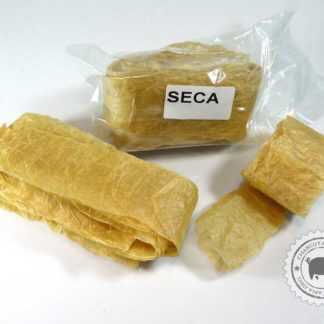 Dried Beef TripeOriginal price was: R$ 19,00.R$ 15,00Current price is: R$ 15,00.
Dried Beef TripeOriginal price was: R$ 19,00.R$ 15,00Current price is: R$ 15,00. -
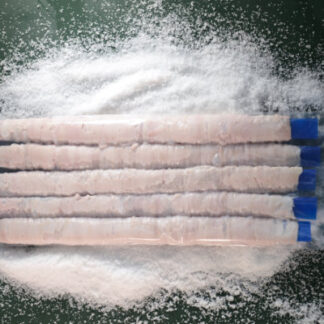 Tubing pork casingR$ 39,00
Tubing pork casingR$ 39,00


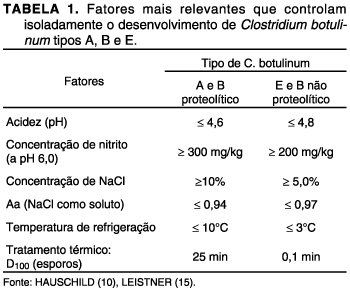
What happens if you put too much curing salt on fresh sausage?
Hey! To smoke chicken breast, what salt must be used to cure it? Is 48 hours of healing already good?
Hello, I would like a recipe for homemade smoked salami, do you have any?
Ciauscolo salami
Hello! all good? I made a salt cure on pork; I just used salt. The flavor is very pleasant. I don't know if you can say, but is there a risk in consuming this product?
I avoided using curing salt, due to the harm it can cause. If next time I want to use salt for curing (to make raw ham, for example) do I use number 1 or 2? Another thing, what is the minimum amount to use per kilo of meat?
I really appreciate your attention!
Celio
Hi Celio. For raw ham, you must use curing salt 2. Curing salt type 1 is for products that are ready and consumed quickly, such as barbecue sausages. You can consume it with just salt, the curing salt is additional protection. It is worth using the recommended minimum, which is 2.4g per kg of meat.
Thank you, Eduardo!!
Can I use curing salt to season pork for barbecue
You can use type 1 curing salt for barbecue meats. I recommend seasoning beforehand, waiting at least 24 hours before baking and using an antioxidant in combination to speed up nitrite conversion.
Bro, curing salt is a preservative, but it won't “salt” the meat like table salt. Be careful with the proportions.
If it is for a barbecue, consumption must be immediate, then you can use NaCl sachet table salt
Good morning! For 100kg what would be the amount of curing salt? 300g?
250g of instacure standard curing salt.
Should I mix the curing salt with table salt to use or do I use the curing salt and then use the table salt?
How to make jerky that sells at sales.
Should I use 2.4g of curing salt per kg of meat and supplement with table salt?
Good afternoon
Can I use type 2 curing salt to make smoked sirloin? Is there a problem?
Grateful.
Goodnight,
What curing salt should I use to make fresh sausage? And also, in the case of fresh sausages, is it enough to use curing salt with nitrite alone? And finally, how much should be used and whether I take into account the weight of the meat+fat to calculate the curing salt.
Good morning.
Can I use curing salt in a pork brine? And if so, how do you use it in quantity? Are there specific measures regarding the amount of liters of brine per kilo of meat? Is it possible to add herbs and spices? And how long do I need to leave the meat in this brine with curing salt?
Thank you very much in advance
Good evening, I made homemade bacon, I added much more curing salt than allowed, it is bad for your health
Good morning, my name is Emília Mendes, I'm from Angola and I'm very interested in learning charcuterie I saw my grandmother make when I was little. I feel like it's the right business for me.
I want to know if you offer online courses
Hi Emilia, at the moment we do not have any courses.
Should I just use curing salt or do I use regular salt for sausage too?
Please, one question, I followed an Italian recipe to prepare a loin cup, they only use 24 grams of sea salt for approximately 1 kg piece, but I see that here it is recommended to use curing salt 2, so this is it Should I use curing salt and the rest could be sea salt?
Goodnight
How much type 2 curing salt should I use per kg to make raw ham?
2.4g per kg of ham. Use type 2 curing salt, which contains common table salt, nitrite and sodium nitrate. Like this: Curing salt 2
As the ham is salted two or three times at the beginning of the process every 10 days, do you recommend using curing salt 2 in the first or second salting process, or whatever?
Right from the first time to acquire protection. There are several different processes for making raw ham, many only salt it once.
Hi, in the brine the amount of curing salt is calculated by the weight of the meat, meat + water, water.
Thanks.
Due to the amount of water + meat.
Is curing salt used in fish or seafood sausages?
Good afternoon, I bought curing salt but it contains 4% of nitrate, what should I do? Note, I'm going to make pancetta a rotolatta
Just nitrate, no nitrite?
Hello, what additives can I use to make the dried meat pink and what is the proportion per kilo of meat.
Good afternoon! I prepared my brine for the pastrami and added 7 g of cure 1 in a 1.1 kg piece. The manufacturer's recommendation for cure 1 was 5 g per 1 kg. I also followed the recommendation in your pastrami recipe which adds 7.5 g. Anyway, is it a safe amount?
Hello, what curing salt can I use on the burger.
type 1 curing salt https://charcutaria.org/produto/sal-de-cura-1-cura-rapida-linguicas-e-salsichas-b001/
I went to buy salt 1 to make bacon, the seller said it was salt 2 and my daughter bought salt 2, can I add salt 2 to a quick cure that is for salt 1
Yes, you can add salt 2. The nitrate from curing salt 2 will not take effect for a short time, but there is no problem.
Wow, I'm glad I found this conversation! I've been researching this issue of using salt 2 for days. Thank you!! Share this information!!
I made a mistake with the measurements and added 30 grams per kilo instead of 3 grams of curing salt. Should I discard everything due to excess nitrite or is it possible to wash it off?
Hi Rafael. In 30g of curing salt there is about 1.8g of nitrite, which is really a lot. I recommend that you discard it.
BOA TARDE GOSTARIA DE SABER O SEGUINTE GUANDO ESAMOS SAL DE CURA ESTE SUBSTITUE O SAL COMUM? EM VEZ DE 3% DE SAL COMUM USAMMOS 3%DE SAL DE CURA?
ATT. Denis Perin
Hi Denis. No, the curing salt is to be used in the amount of 0.25%, that is, 2.5g per kg of meat. The rest should use common salt.
Hello, good morning, I have a question, I want to make shrimp and fish sausage, how much curing salt should I use? Same percentage as I use for beef and pork?
Hi Yuri, same percentage.
Good afternoon, can I use curing salt 2 to make jerky?
Hi Walter. The jerky does not contain curing salt. Search for “Technical Regulations on Identity and Quality (RTIQ) for beef jerky”
Good morning, I purchased curing salt 1 here in my city to make Fresh Sausage. The packaging only says that it contains 93% of Salt and 7% of Nitrite.
On a website that also sells the product it says that it is recommended to use 1kg of cure for 100kg of meat, that is, 10g of cure for each kilo.
I'm thinking it's a lot, could it be that for safety I could use 2.5g per kg as a standard since following the calculations 7% of Nitrite would give 2.14g per kg?
Hi Alex. Due to the composition of the curing salt you purchased, you can use 2.5g per kg of meat as a standard in your recipes.
Thanks Eduardo
I would like to know, I buy a fraud, huh, take it off, but how does it bake? Does it turn black? I bought Pradao Curing Salt, how do you use it?
Waiting for response
Hi Gerffson, use approximately 2.5g of curing salt for every 1 kg of meat, mix with the other seasonings (common salt and condiments), leave in the fridge for at least 12 hours and you can now bake.